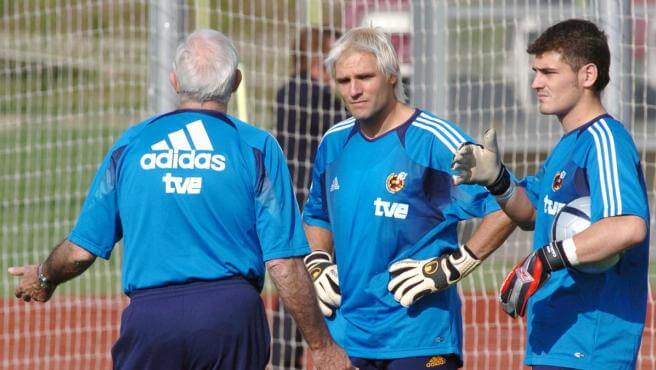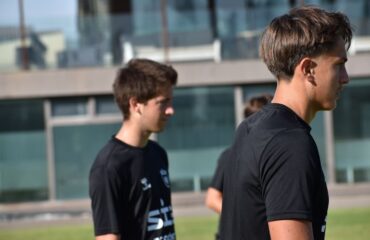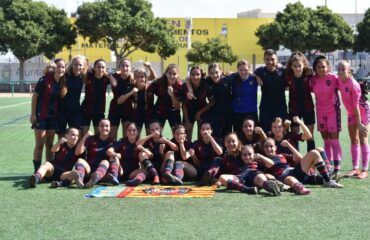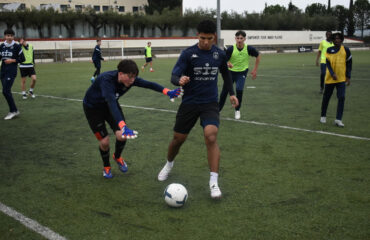TRAINING AT A HIGH-PERFORMANCE FOOTBALL ACADEMY
Reaching the elite of football is not easy and it is necessary to maximise all the player’s talent. The International Football Academies in Spain that have High Performance Centres are one of the best options to develop the footballer of the future based on the best football training resources.
“I have doubts that my son will become a professional”, I am objective. It depends on his effort, as he has conditions, but like many other young players in development. Having conditions only puts you in starting positions, it doesn’t make you reach the elite”. These are the words with which Santiago Cañizares answered a few days ago to the question of whether his son Lucas, goalkeeper of Real Madrid U18, would become a professional.
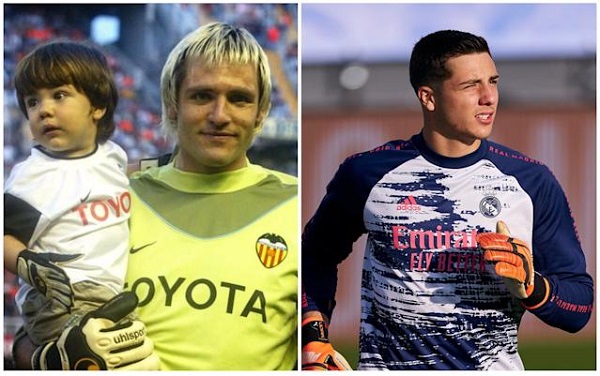
Santi Cañizares is considered one of the best goalkeepers in the history of Spanish football thanks above all to his great career with Valencia CF and the Spanish national team, in which he was the mentor of Iker Casillas, who had in the figure of Cañizares his mentor. Despite his status as a football legend and his considerable experience, Cañizares is clear: there are many talented young players, but they will not succeed without effort and without putting all their strength into improving.
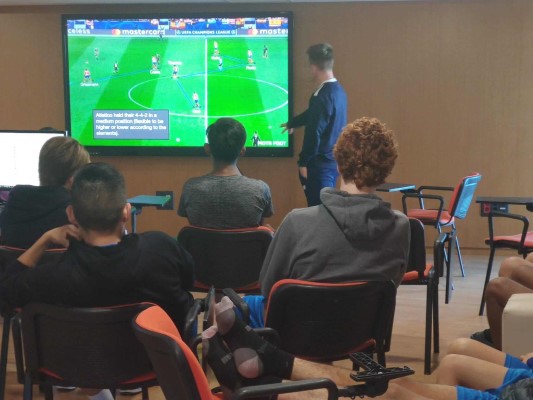
That’s where one of the keys to going from being a promising youngster to a professional player lies: sacrifice. And to give it all you need to have the best football training, without a doubt. Therefore, we can affirm that the coaches and their methodology will mark the future of the young player, as his development will be conditioned by the knowledge, guidance and inspiration of the coaches.
However, there are many football coaches out there and the choice of which one to put in which hands is not an easy task, so there is a tendency to make mistakes in the selection. What can we do to at least try to reduce this margin of error? Focus on the ambition of the coach, the player and the entity that wants to have his services. And all these elements, if they are ambitious, will have one thing in common: they will never stop learning.
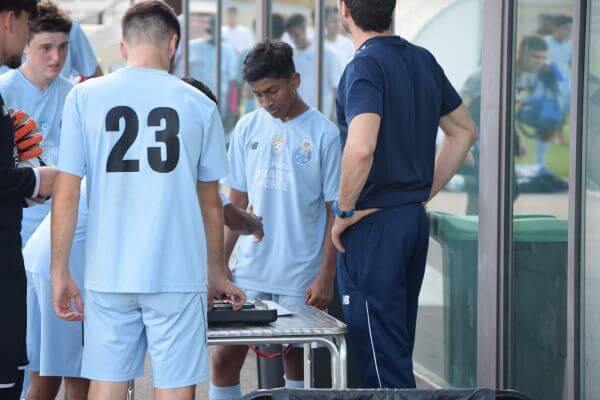
Football education
The most important educational tool a professional footballer has had is sport. Thanks to it, he has learned to accept defeat, to understand that others are better, to get up after not having done well, to make a much greater effort to overcome his limitations, to respect the coaches and staff who correct him… all these acts have been given to him by sport, in the case of football, through a simple ball and from the experience of belonging to a team sport, where one day you make an effort for a teammate knowing that the next day he will make an effort for you when you need it the most.
As for ambitious coaches, they are coaches who never cease in their idea of growing as an educator and trainer. Through books, videos, listening to the experiences of other colleagues, courses, lectures… anything goes to continue developing their knowledge and applying it to the young players who have chosen them for their training. Even more so if it is a high performance training.
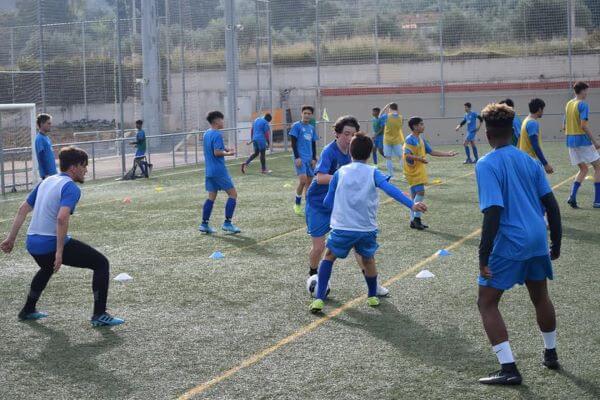
High performance is the highest demand in sport. It is putting all the talent at the service of staff dedicated one hundred percent to finding the way to enhance this talent in order to achieve the goal of success. And in this technical-player equation is where the International Football Academies that have a High Performance Centre appear, as is the case of Soccer Inter-Action -located in Enguera (Valencia, Spain)-
Spain is one of the best places to train as an elite football player. This country has countless resources dedicated to the beautiful game and there are many professionals coming out of Spain, from players to coaches, physical trainers, methodologists, analysts, etc.
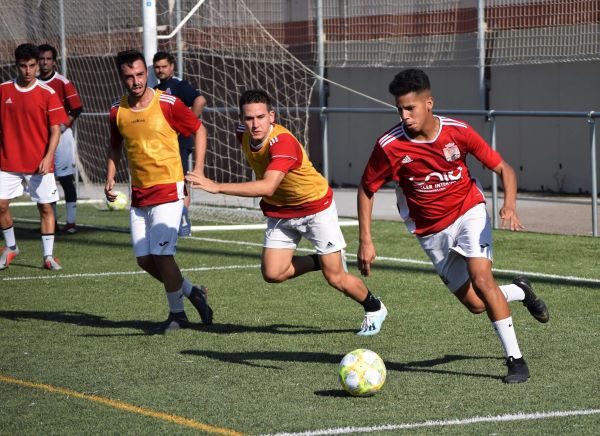
Therefore, the rise of International Football Academies is a reality in this country, so a differentiating element to know which of them has the desired ambition to continue learning and allocating resources to train their young players is to see if they have a High Performance Centre.

Soccer Inter-Action and its ambitious International Soccer Academy
Aware of this, Soccer Inter-Action has elite facilities built in an environment by and for football. The training of the player, both sporting and academic, is the most important thing and for this reason it is committed to the continuous training of its employees and the daily improvement of its Annual Training Programme for its international internal players in its Football Academy in Spain.
Along with the Annual High Performance Training Programme, it also runs football clinics in Spain, football camps in Spain, courses for coaches and sporting directors, training camps for professional teams, technification sessions, a Football School programme and even the management of teams in important categories in Spain, such as the Third Division.
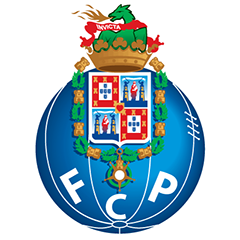
As if this were not enough, Soccer Inter-Action set its sights on the neighbouring country, Portugal, to expand its learning and development potential and thanks to this it has become an official partner of FC Porto in Spain. The infinite knowledge of the Spanish and Portuguese football world united in the same football player development programme.
Talent development after COVID-19 expansion
The emergence of the coronavirus pandemic is a further test of who is committed to never stop learning and is willing to give everything to achieve their goal. The year 2020 will, unfortunately, be remembered for this sad event that has forced society to confine itself and to take unusual health and distancing measures for human relationships and that, to a large extent, goes against the nature of high-performance team sport.

However, this situation has allowed many sports organisations to get the best out of themselves and their young developing players to continue training online while they wait to be able to travel again – or normality is restored in terms of team sports – to train in person, which is why, over the last few months, there have been countless training proposals: specialised websites and blogs, sports platforms, online books and YouTube videos.
However, all of them have had a big ‘but’: the lack of proximity to the player. Feedback with the player is vital and for this to happen, there must be trust between the athletes and the professionals who create these training materials.
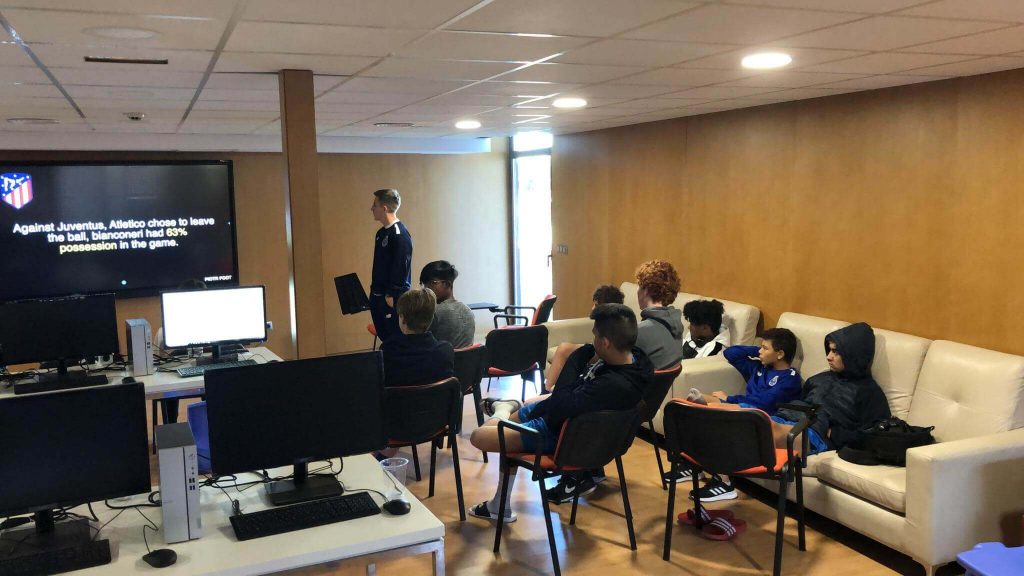
Soccer Inter-Action has made use of its technological resources and its FC Porto methodology – a team recently proclaimed League Champions and which has its International Football School at the SIA High Performance Centre – to be in constant contact with all its young players: from the International Football Academy in Spain to the FC Porto Dragon Force Football School. These are some of the exercises and training tips that have been sent throughout these months with the aim of continuing to enhance all the player’s talent.
U12 Football Training Exercises:
The youngest players of the FC Porto Dragon Force School also had their respective training exercises. Being at home for so long has been a challenge for the families, as the energy of these boys and girls is very high. That is why it has been so important to send training sessions every week, all of which have been designed to fit in with the different spaces in the homes.
Here we can see four simple exercises, but all very practical. Designed to be done with the rest of the family – father, mother, brother or sister – the session was divided into four activities. The first one of individual skill and technique through a ‘Futvolei’ in which each player can only drop the ball once in his or her field and then has to pass the ball to the centre of the opposite field.
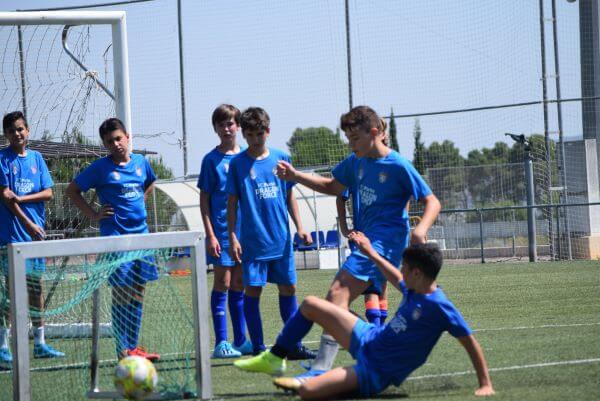
The second focuses on ball handling and dribbling speed. The player has to pass through several objects placed in the form of a goal as many times as possible and cannot pass through the same door twice in a row. If the other competitor steals the ball, he automatically becomes the player who has to complete the circuit without his opponent stealing the ball.
exercise three is aimed at improving passing accuracy and game vision. With a fun bowling exercise. The aim is simply to knock down all the objects that have been placed in a triangular shape – as if they were bowling pins. You have to count the number of shots needed to knock down all the pins and the winner is the one who needs the fewest shots.
Finally, the fourth exercise requires more technique and skill. Both competitors have to simulate a mirror effect, i.e. each player must perform and demonstrate a sequence to be imitated by the other player without the ball touching the ground. The imitator has up to three attempts to successfully execute his opponent’s sequence.
FC Porto #HomeCup:
Knowing that weekly training alone was not enough, FC Porto and its Dragon Force Schools created the #HomeCup, an U12 competition in which all footballers enrolled in the schools were invited to participate by recording themselves in different challenges proposed by FC Porto.
The more videos recorded, the more points, so families and players got involved to go challenge by challenge to improve themselves. This is an example of the many challenges that were proposed:
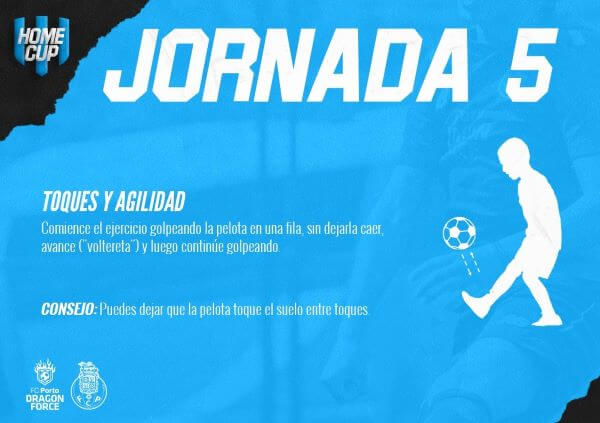
To score points on the day, all the U12 footballers who accepted the challenge of filming themselves had to perform a ball-touching exercise in the air. The activity consisted of starting the exercise by hitting the ball without dropping it and then doing a somersault and having enough reaction speed to continue touching it. However, to make it easier and adapted to the smaller ‘Dragons’, the ball was allowed to bounce on the ground while performing the acrobatics, which was the fun part of the challenge.
U18 Football Training Exercises:
The U13 to U19 categories also needed adapted training sessions at home. It is a bigger challenge to do these exercises as the players are more mature and need to be more demanding to give one hundred per cent.
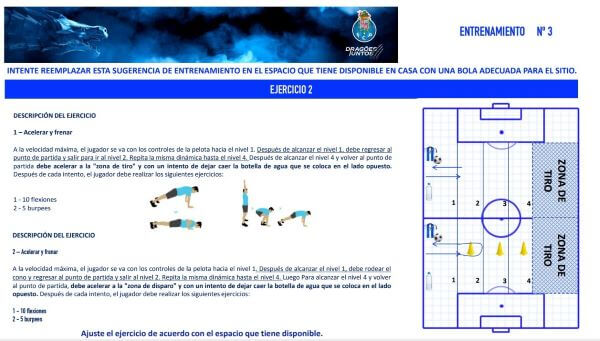
For this reason, FC Porto and its FC Porto Dragon Force Football School developed a more exhaustive training plan, including a routine of physical exercises with the mission of preventing injuries and activating the body due to the inactivity of being at home for so long, but always interspersed with activities where the ball is the protagonist, in fact, this exercise consists of Accelerate and Brake.
At maximum speed, the player drives the ball up to level one and when he reaches it, he has to return to the start and immediately go in search of the second level. This action is repeated until level four is reached and once back to the start, the player has to sprint to the shooting area and from there shoot down the object that has been placed right in front of him – having only one chance to do so, so accuracy has to be at a maximum. Before starting a new repetition, the player has to do ten push-ups and five burpees.
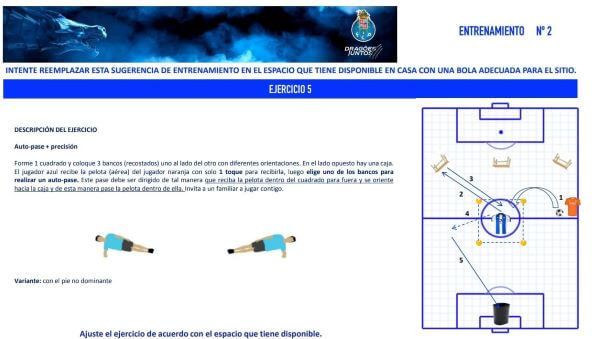
In this other exercise, passing accuracy is worked on to its full potential. Form a square and place three benches – or objects that play a similar role – next to each other in different orientations.
A cube or box is placed on the opposite side. In this way, one of the players receives the ball – placed in the square that has been formed – after a cross over the top of his teammate and has to control the ball in one touch, then he has to choose one of the benches to perform a self-pass and this has to be directed in such a way that he receives the ball inside the square. Once the ball is back in the square, the player has to make a control facing the cube and try to get the ball into the cube or box, which can be lying down for greater ease and speed.
Training exercises for goalkeepers:
The goalkeeping position requires special attention. The goalkeeping coaches also developed their own training plan to ensure that none of their goalkeepers lost their form and continued to be a star in goal.
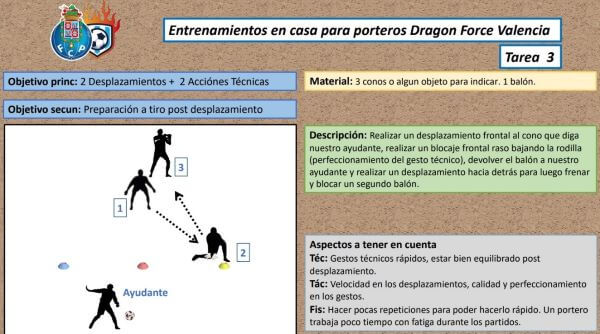
In this task, two objectives are proposed. The main one is to perform two displacements and two technical actions; while the secondary objective is to prepare properly for the post-displacement shot. To do this, we must have a ball and place three cones or, failing that, some object that fulfils this position and perform a frontal displacement to the cone that our assistant says, perform a low frontal blocking by lowering the knee -perfection of the technical gesture-, return the ball to our assistant and perform a displacement backwards to then stop and block the second ball.
U23 football training exercises:
Once it was confirmed that the leagues were over, it was time to think about next season. The first competitions to start in the 2020/2021 season will be, in addition to the Spanish First and Second Divisions, the Second Division B, the Third Division and the Regional Preferente.
With the management of two teams, Soccer Inter-Action and their physical trainers have set to work to develop a training plan for their teams UD SIA Benigànim and Discóbolo-La Torre AC. These sessions are primarily aimed at improving physical conditions in preparation for a pre-season that is just around the corner.
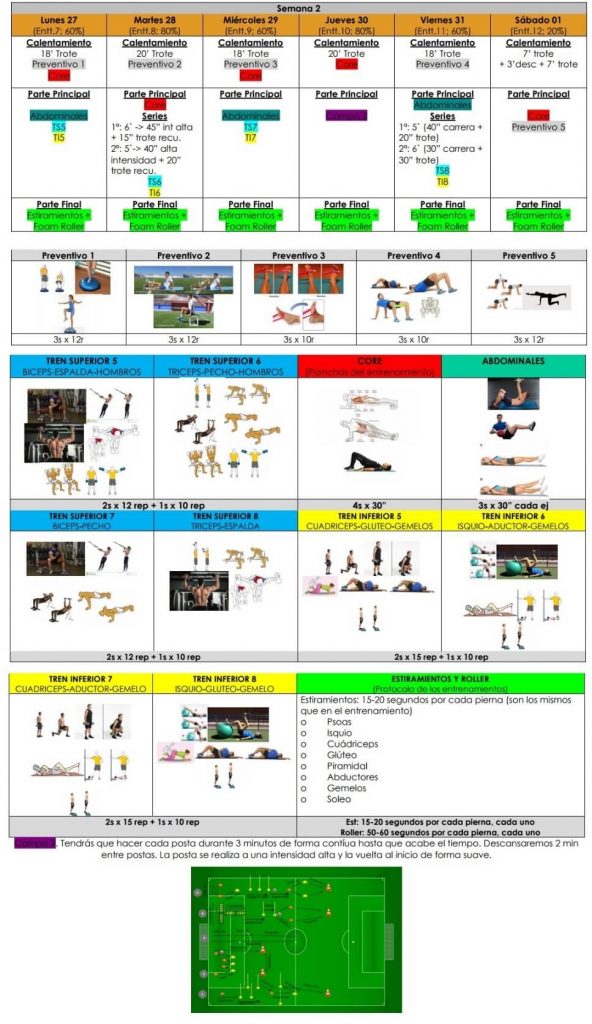
These training sessions are divided by weeks and this is one of the examples of the second week’s session. Injury prevention exercises are worked on with aerobic activities, highlighting a circuit in which the player has to do each position for three minutes continuously until the time is up. A two-minute rest is taken between each position, with the outward journey to the position at a high intensity and the return journey at a gentle pace.



